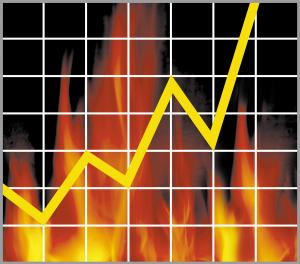How to prepare for killer capital costs on future power-plant builds.
Richard Stavros is executive editor of Public Utilities Fortnightly.
Mark Twain once wrote: “A banker is a fellow who lends you his umbrella when the sun is shining and wants it back when it starts to rain.” If utility finance executives aren’t careful, they might find themselves caught in the rain without an umbrella.

In the recent past, utilities had been enjoying a sunny outlook. They experienced record equity valuations and unprecedented access to low-cost capital. In fact, companies comprising Standard and Poor’s electric utility index generated $2.8 billion in free cash flow during the last 12 months—despite record levels of capital expenditure and dividends—while returning 34.6 percent.
But a cloudy outlook is beginning to emerge, as the cost of capital for utilities heads skyward.
History teaches us that higher interest rates lead to a dip in utility equity valuations, as investors flee to higher-earning, fixed-income investments.
Utility stocks are highly correlated and historically have moved inversely to 10-year Treasury yields (see Figure 1). Since the end of September, the Philadelphia Utility Index has depreciated by 9.2 percent versus a decline of 4.1 percent for the S&P 500.

